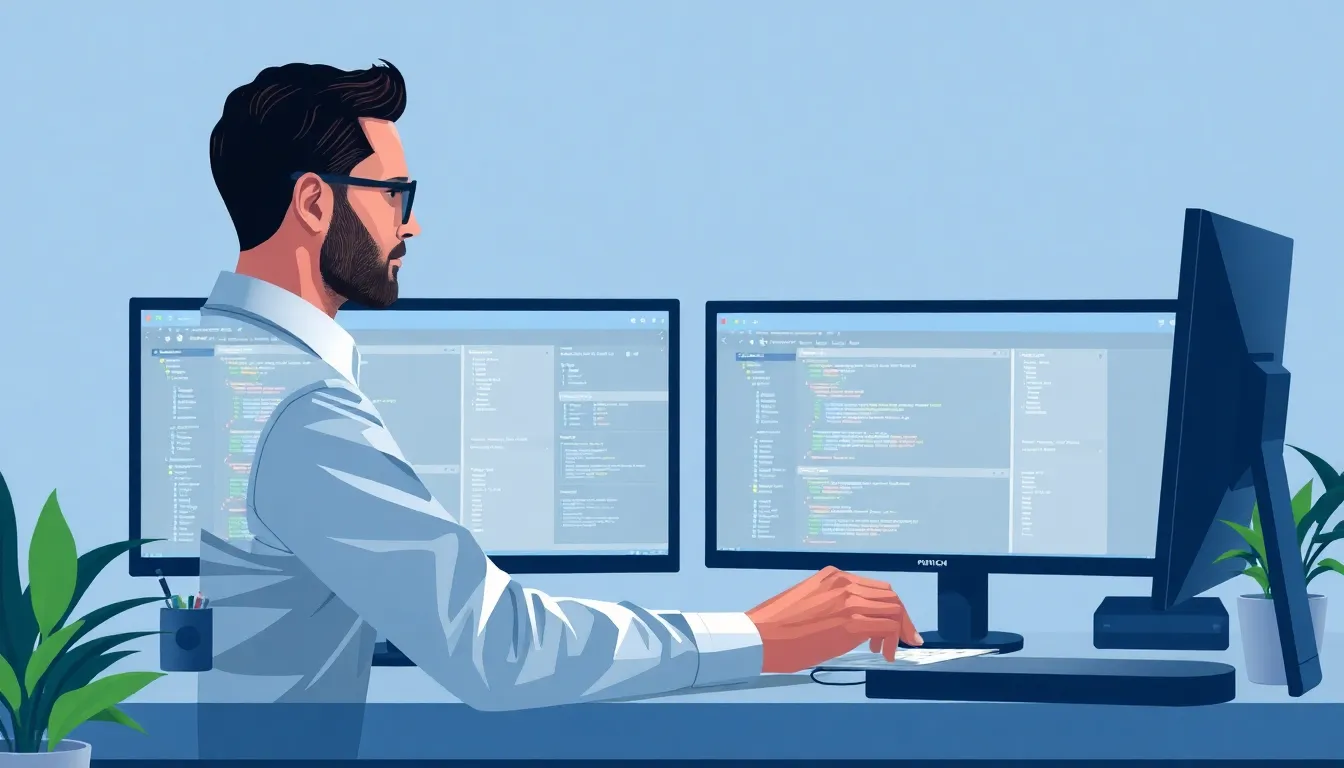EndBugFlow: Revolutionize Your Debugging Process with This Powerful Tool
In a world where bugs seem to multiply faster than rabbits, developers often find themselves in a never-ending cycle of debugging. Enter EndBugFlow, the superhero every coder didn’t know they needed. This innovative tool swoops in to save the day, turning chaos into clarity and transforming debugging from a dreaded task into a smooth-flowing process.
Imagine a world where bugs are squashed before they even get a chance to wreak havoc. With EndBugFlow, that dream becomes a reality. It streamlines debugging, making it not just efficient but almost enjoyable. Say goodbye to the days of hair-pulling frustration and hello to a more productive workflow. Whether you’re a seasoned pro or a coding newbie, EndBugFlow is here to rescue you from the clutches of pesky bugs.
Endbugflow
Contents
EndBugFlow is a modern debugging tool that streamlines the process for developers. Designed to address common challenges, it enhances efficiency during debugging tasks. With an intuitive interface, users can navigate their projects with ease, regardless of their coding experience.
The features of EndBugFlow stand out in a crowded market. Users gain access to real-time error tracking, allowing them to identify issues as they arise. Integration capabilities with popular programming environments simplify usage. Thus, developers do not need to switch between multiple tools, saving time and increasing productivity.
Collaboration among team members improves significantly with EndBugFlow. Teams can share debugging insights, making problem-solving a collective effort. Annotations support seamless communication regarding bugs, ensuring everyone stays informed. As a result, project timelines receive a boost due to quicker resolutions of coding issues.
EndBugFlow also emphasizes user learning. Tutorials and documentation guide users through the debugging process. Knowledge acquisition becomes a natural part of using the tool. By encouraging familiarity with code and syntax, it aids developers in honing their skills.
Ultimately, EndBugFlow transforms the debugging experience. Frustrations accumulate during traditional debugging methods, but this tool changes that narrative. It provides functionalities that resonate with both novice and seasoned developers. Users can focus on creating quality code rather than dealing with interruptions from bugs.
Features of Endbugflow


EndBugFlow incorporates several features designed to enhance the debugging experience for developers at any level.
User-Friendly Interface
EndBugFlow boasts a modern design that prioritizes ease of use. Navigating the interface feels intuitive, allowing users to focus on debugging rather than getting lost in complex menus. Visual elements guide users effortlessly through error tracking processes. Key functionalities highlight important information, ensuring clarity throughout the debugging journey. Developers appreciate customizable dashboards that let them tailor their workspace according to personal preferences. This attention to design fosters a comfortable environment where productivity thrives, aligning with user needs and boosting overall efficiency.
Workflow Automation
Automating mundane tasks stands out as a major feature of EndBugFlow. This functionality reduces repetitive actions and streamlines the debugging process. Users benefit from real-time error tracking that identifies issues immediately, eliminating delays in detecting problems. Integration with popular programming environments enhances workflow, as users work seamlessly without switching tools. Automated notifications alert developers to critical bugs, promoting swift responses. By focusing on automation, EndBugFlow empowers developers to devote more time to coding, fostering a smoother and more efficient development lifecycle.
Benefits of Using Endbugflow
EndBugFlow provides significant advantages for developers by streamlining the debugging process. This innovative tool enhances productivity and fosters better collaboration among team members.
Enhanced Productivity
EndBugFlow elevates productivity through its real-time error tracking feature. Users identify issues as they arise without delays, minimizing time spent on debugging. Automation plays a crucial role, as it handles repetitive tasks, allowing developers to focus on core activities. A customizable dashboard offers insights into bugs and tasks, leading to better time management. Utilizing EndBugFlow leads to an efficient coding environment where teams can swiftly address issues and maintain project momentum. Developers can devote more energy to writing quality code, resulting in fewer interruptions.
Improved Collaboration
EndBugFlow promotes collaboration by enabling team members to share insights seamlessly. Enhanced communication tools allow developers to discuss bugs and solutions in real time. By offering integrated platforms, team members can coordinate their efforts without switching between various applications. Clear documentation helps users understand each other’s contributions and tracks progress effectively. When everyone stays informed, the entire team can address issues more swiftly, reducing project bottlenecks. Ultimately, this collaborative approach fosters a supportive environment where knowledge sharing enhances problem-solving capacities.
How to Get Started with Endbugflow
Getting started with EndBugFlow involves a few straightforward steps. Users can easily access the tool by visiting the official website and following registration prompts.
Setting Up an Account
Creating an account on EndBugFlow only takes a few minutes. Follow the on-screen instructions to provide essential details like name, email, and password. After submitting the form, users receive a confirmation email to activate their account. Clicking the link in the email completes the registration process, granting access to all features of the platform. Once logged in, users can explore the interface and commence their debugging journey.
Integrating with Other Tools
Integrating EndBugFlow with popular development tools enhances its functionality. Users should navigate to the integration settings within their account dashboard. From there, a list of supported tools, such as GitHub and Slack, appears for selection. Connecting these tools allows for seamless data sharing and real-time notifications related to debugging activities. This integration promotes efficient workflows, reduces context switching, and boosts overall productivity.





